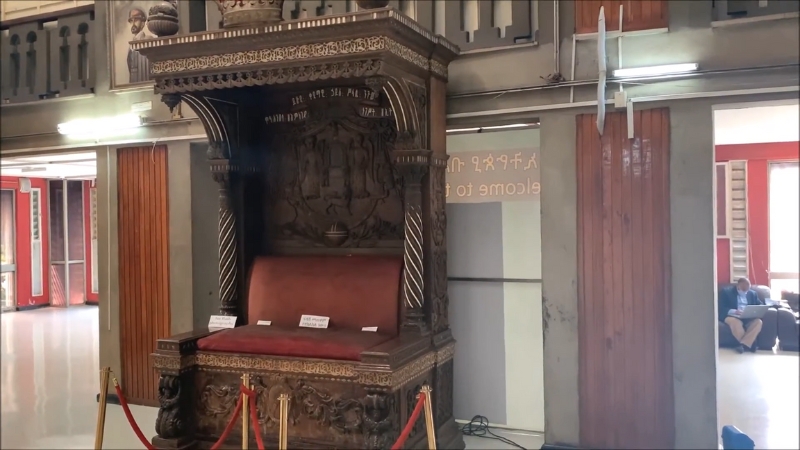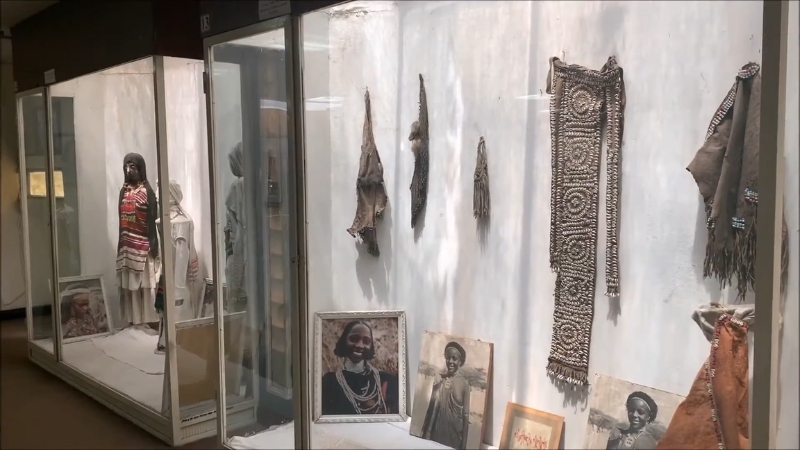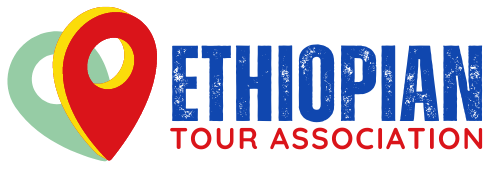The National Museum of Ethiopia is one of the most important cultural institutions on the African continent.
Located in Addis Ababa, it holds a vast and historically significant collection that spans millions of years of Ethiopian history, from prehistoric fossils to 20th-century art.
If you plan to visit, it is essential to know what is on display, how to navigate the space, and what practical considerations to keep in mind.
What You Will See: Floor-by-Floor Breakdown

Basement Level: Paleoanthropology and Fossils
This is the most internationally famous section of the museum, primarily because it houses the fossilized remains of “Lucy” (Australopithecus afarensis)—one of the oldest and most complete hominid skeletons ever discovered.
Lucy lived about 3.2 million years ago and has become a symbol of Ethiopia’s central role in human evolution.
Also on display:
- Casts and partial remains of other early hominids have been found in the Afar and Omo regions
- Geological timelines and fossil maps
- Comparative anatomy displays showing early hominids and modern humans
Ground Floor: Ancient and Medieval Artifacts

This level covers over 3,000 years of recorded Ethiopian history. It includes artifacts from the D’mt Kingdom, Aksumite Empire, Zagwe Dynasty, and the Solomonic line.
These were some of the most powerful and advanced civilizations in sub-Saharan Africa.
Key exhibits include:
- Stone inscriptions in Ge’ez and Sabaean scripts
- Bronze and iron tools from early Aksumite settlements
- Gold and silver coins minted during the Aksumite period (4th century AD)
- Wooden royal thrones and crowns used by emperors
- Orthodox Christian manuscripts and processional crosses
First Floor: Ethnography and Traditional Culture
Here, the focus shifts to Ethiopia’s diverse population. The country is home to over 80 ethnic groups, each with its own languages, traditions, and clothing. This floor showcases the rich cultural variety found across regions.
Highlights include:
- Traditional clothing from the Oromo, Amhara, Tigray, Sidama, and Afar peoples
- Musical instruments like the krar (lyre), masenqo (one-string fiddle), and drums
- Tools and artifacts related to coffee ceremonies, agriculture, and daily life
- Jewelry, pottery, and handwoven baskets
- Wedding attire and ceremonial swords
Second Floor: Modern and Contemporary Ethiopian Art
View this post on Instagram
This level is smaller than the others but offers valuable insight into Ethiopia’s more recent history and artistic identity. The art here covers colonial resistance, political commentary, post-war reconstruction, and contemporary expressions of identity.
Exhibits include:
- Oil paintings from the 20th century by famous Ethiopian artists like Afewerk Tekle
- Abstract sculpture and mixed media installations
- Artworks reflecting on the Italian occupation (1936–1941)
- Works related to the 1974 revolution and the fall of Haile Selassie
- Portraits of national heroes and cultural icons
Special Collections and Archives
Beyond the main galleries open to the public, the National Museum of Ethiopia houses several significant collections that are rarely seen by casual visitors but play an essential role in preserving the country’s heritage.
These archives support academic research, international cultural exchanges, and long-term conservation efforts.
Although not part of the regular exhibition flow, they represent some of the most valuable and delicate holdings in the institution’s care.
Textile and Costume Archives

The museum maintains an extensive archive of historical textiles, garments, and ceremonial fabrics dating back to the late 1800s. These include traditional handwoven cotton garments from various ethnic groups, royal robes embroidered with gold thread, and religious vestments used in Orthodox Christian liturgies.
Many of these pieces are preserved under controlled conditions due to their fragility. Select items from this collection are occasionally loaned to international museums for temporary exhibitions on African or royal textile traditions.
Researchers studying indigenous weaving techniques or regional dress evolution often request access to this archive for comparative analysis and documentation.
Imperial Family Memorabilia
A separate, secured section contains personal artifacts and belongings associated with Ethiopia’s last emperors, particularly Emperor Haile Selassie I and Empress Menen Asfaw. The collection includes handwritten letters, official documents, military uniforms, medals, travel trunks, and diplomatic gifts from foreign heads of state.
Some of these items have been publicly displayed in past special exhibitions, but the majority remain stored for preservation purposes. Their historical significance lies not only in their connection to Ethiopia’s monarchical past but also in their documentation of the country’s early international diplomacy and modernization efforts in the 20th century.
Rare Manuscripts and Religious Texts
@mcats24 When you visit Ethiopia dont miss out the National museum 😃 #nationalmuseumofethiopia #ethiopian_tik_tok🇪🇹🇪🇹🇪🇹🇪🇹 #eastafricanontheloose #travel #eastafricantiktoks #fyp #museums #lucy ♬ original sound – East African on the loose🌍💕
The museum also curates a collection of rare manuscripts written in Ge’ez, Amharic, and other Ethiopian languages. These texts cover a range of subjects, including Orthodox Christian theology, astronomy, medicine, legal codes, and historical chronicles.
Most of the manuscripts are handwritten on parchment and bound in traditional leather covers, many of which are hundreds of years old. Due to their age and delicate condition, they are stored in climate-controlled vaults and are not accessible to the public without prior academic approval.
Scholars working on Ethiopian script, biblical translation history, or East African historiography often consult these materials under strict supervision.
Access and Viewing Conditions
These archival collections are not part of the public exhibition halls. Access is limited to credentialed researchers, university faculty, or museum professionals who submit formal requests.
Appointments must be arranged well in advance through the museum’s administrative offices, and access is subject to staff availability and conservation schedules.
Photography is generally prohibited, and handling is done only under staff supervision with gloves and preservation tools.
Practical Information: Hours, Fees, Tips
Location
- Address: King George VI Street, Arat Kilo area, Addis Ababa
- Landmark: Near Addis Ababa University and the National Palace
Opening Hours
- Monday to Friday: 8:30 AM – 5:30 PM
- Saturday and Sunday: 9:00 AM – 5:00 PM
- Closed on major Ethiopian public holidays
Admission Fees (as of 2025)
Visitor Type
Entry Fee (ETB)
Ethiopian Citizens
50
Foreign Nationals
200
Students (with ID)
100
Children under 12
Free
Payment method: Cash only. No credit cards or mobile payments are accepted at the ticket booth.
Visitor Tips and What to Expect
- Time Needed: Allocate 1.5 to 2 hours for a thorough visit. If you’re especially interested in fossils or religious history, you may need longer.
- Photography: Allowed without flash. Some sections prohibit photos—signs are posted.
- Language: Labels are mostly in Amharic and English. Guided tours are sometimes available, but not guaranteed without advance notice.
- Accessibility: Wheelchair access is limited, especially to the basement level. Older staircases are narrow, and there are no elevators.
- Facilities: Basic restrooms are available. There is no cafe on-site, but nearby cafes and restaurants are within walking distance in Arat Kilo.
- Security: Bags are checked at the entrance. No lockers available—travel light.
Additional Nearby Attractions
Until the Emperor Hailie Selassie was overthrown in 1974, the various royal houses of Ethiopia nearly all traced their lineage back to Menelik and Solomon, which is why their symbol was the Lion of Judah (statue in Addis Ababa). 🇪🇹 pic.twitter.com/mkaWvo3uA7
— Patrick Chovanec (@prchovanec) November 18, 2018
If you have extra time, the following sites are within a 10–15 minute walk or short drive from the museum:
- Addis Ababa University and the Ethnological Museum (former palace of Emperor Haile Selassie)
- Holy Trinity Cathedral (burial site of Haile Selassie and other dignitaries)
- Lion of Judah Monument
- Meskel Square (central plaza for public events and rallies)
Final Thoughts
The National Museum of Ethiopia is not a flashy or overly commercial space. Instead, it presents its history with seriousness and respect. The displays may be minimal in presentation, but the content is powerful and deeply tied to Ethiopia’s national identity.
You’ll see real human fossils, imperial treasures, sacred Christian artifacts, and expressions of national pride through art and tradition. If you care about human origins, African civilization, or understanding Ethiopia’s cultural complexity, this museum is an essential stop.
Arrive early, take your time, and approach each section as part of a long, unbroken historical journey that continues to shape the region today.
